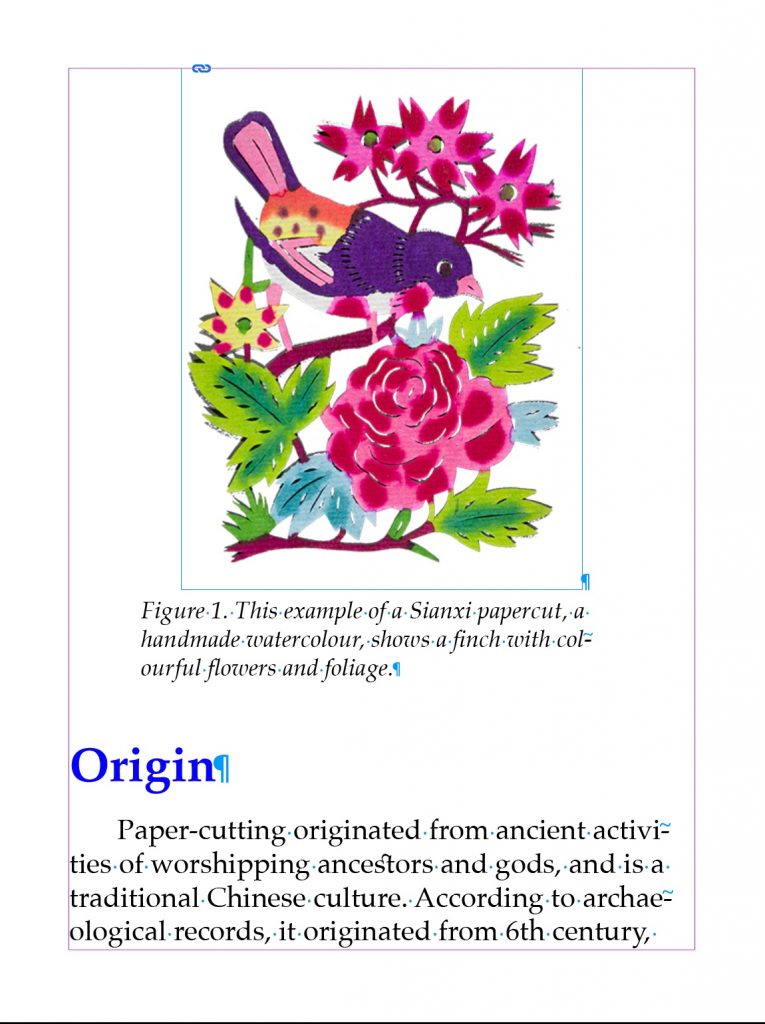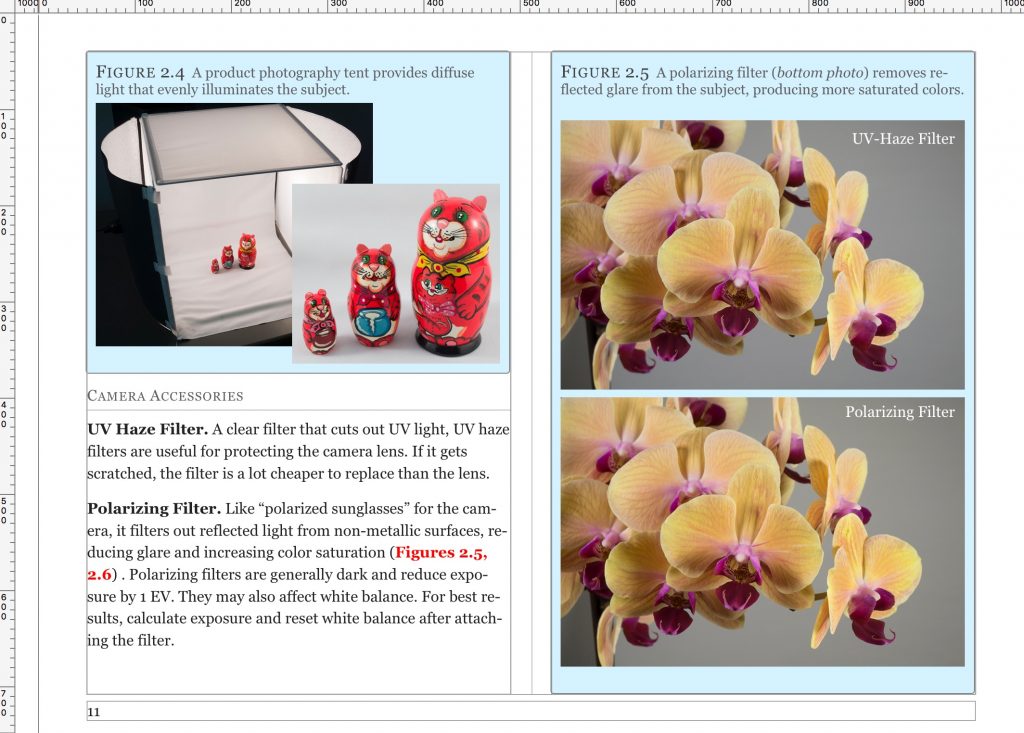Web Design Primer
Chapter 12 – eBook Formats
eBooks are electronic documents designed to be read on a tablet, laptop, or desktop computers. What distinguishes eBooks from other books is their ability to include media, like videos and animations, and their user-adjustable text size and reflowable format, which both facilitate reading.
Since they are easy to create, edit, and distribute, eBooks lend themselves to “professor publishing,” the writing of customized course packets for students. Students might also find them to be advantageous since they easily accessible, low cost, and portable (e.g., being able to carry multiple e-books on a tablet without the added weight).
The main disadvantage of eBooks is that the generic formats were developed for text-heavy documents like novels and business or psychology books that do not contain a lot of illustrations. These formats are not good for placement of multiple, related illustrations (e.g., a photo and accompanying diagram or graph) that need to be grouped together to illustrate a point or concept. Some grouping of photos is possible, however, this type of document could best be output as a PDF.
Interactive PDF
Interactive PDF is an Adobe Portable Document Format (PDF) file that’s intended for on-screen viewing. This type of PDF can have interactive features, including buttons, videos, music, animation, and links (Figure 12-1).

Navigation buttons, for example, can be programmed to enable the reader to move from one page to the next and back, as well as the first and last pages, the table of contents page, and so on. If a table of contents is included, it can be interactive so that when the reader clicks on a section, the page will jump to that section.
The document could also include links to web pages that will load in a browser if the computer or tablet is connected to the Internet.
Among electronic or eBook documents, PDF is best suited to documents where the layout is most important, especially groups of related photos and/or diagrams with captions. For reading on tablets where text legibility is paramount, the eBook formats, ePub or iBook, may be a better choice.
What’s Different about Interactive PDF? When designing an interactive PDF document, the designer should keep in mind what interactive features will be included and allow space for them. E.g., if navigation buttons are to be included, leave space at the bottom, top, or sides of the pages for the buttons. Placing the buttons on a master page enables them to be duplicated and positioned with accuracy on all dependent pages.
Pro tip: if you want to include an interactive table of contents, be sure to set up the contents using the Table of Contents feature and check “Create PDF Bookmarks” in the dialog box so the table of contents will work properly.
ePub
ePub (variously known as EPUB, ePub, .epub, and other abbreviations for “electronic publication”), ePub is a generic and open-source eBook format standardized by the International Digital Publishing Forum. ePubs can be created with InDesign and other page layout programs, including Apple Pages.
The advantage of ePubs is their reflowable text, which allows the reader to keep the text the same size, regardless of the eBook reader and orientation used. ePubs are best suited to text-heavy documents, such as novels, psychology books, and business books. They can contain photos and graphics, but the reflowable text can present problems in formatting and layout.
ePubs are actually encapsulated web pages that are written with HTML5 and CSS3 code. Encapsulated means they are self-contained so that the reader does not need to be connected to the Internet to read the eBook. They can be opened and edited with Google’s free Sigil ePub editor. Designers need to have a knowledge of HTML5 tags (e.g., <p> for paragraph, <h1> for heading one, and many others) and CSS3 to edit the code effectively.
What’s Different about ePub? ePubs can be designed and exported from InDesign. When designing an ePub document, the page size is irrelevant, because pages will be created dynamically by the eBook reader. It may be most convenient to use a page size similar to the target eBook reader, such as an Apple iPad or Amazon Kindle.
Some design differences when creating ePubs (Figure 12-2):
- The “KISS” principle (keep it super simple) works best for ePubs — one text box, one photo/diagram, and one caption per page.
- All page items (text, photos, illustrations, etc.) must be inline in a single text box. Inline means the objects are pasted into the text box using the Text tool.
- All text needs to be styled, such as Body, Header, Caption, etc., especially when the Table of Contents Styles feature will be used.
- Don’t build a table of contents because the eBook reader will make it. However, do make a Table of Contents Style because the export dialog box needs this to create the table of contents file for the ePub.
- Don’t worry about automatic page numbers because pages will be numbered by the eBook reader app.
- Save the cover as a JPEG image file and added to the ePub in the export dialog box.

iBook
iBooks (file type .ibooks) are Apple’s proprietary eBooks for the iPad. Currently, they can only be made with Apple’s free iBooks Author program for MacOS computers. That is, you cannot lay out an iBook on an iPad or on a Windows PC.
Like ePubs, iBooks are actually encapsulated web pages based on HTML5 and CSS3. While restricted to Apple devices, they can contain a multitude of interactive objects, or “widgets” (Figure 12-3), including:
- photos and diagrams
- image galleries with multiple, related photos
- 3D objects in Google Collada (.dae) format
- 360° rotatable views of objects
- panoramic views of scenery that stretches across multiple photos
- video and audio
- encapsulated web pages and sites
The more complicated widgets need to be created in the companion program, iAd Producer.

What’s Different about iBooks? iBooks Author has many of the same features as InDesign for designing iBooks: character and paragraph styles, table of contents, templates and master pages, tables, and guides.
Most items (including photos, widgets, and folders of multiple photos for creating an image gallery) are inserted into iBooks Author pages by drag-and-drop.
When finished, the iBooks Author file (file type .iba) can be exported to iBooks (.ibooks) and opened in iBooks for MacOS/iOS.
WordPress Pressbooks
Pressbooks is a relatively new web-based program for writing eBooks that was introduced by the web content management company WordPress. Pressbooks can be created online at pressbooks.com, then output as .epub and in .mobi format for Amazon’s Kindle tablets. Kindle is Amazon’s inexpensive and easy-to-carry line of eReaders that don’t have the same functionality as tablets.
Questions to Consider when Writing an eBook for Class
An example of an eBook written for a class is provided by a web design class taught at Ryerson University. The class required a 400-page textbook that weighed 2 pounds (0.8 kg) and cost around $100. The book contained extensive information that was not used in the class. To use in place of this book, the instructors wrote a 45-page iBook that students could get for free from the class’s distance learning site and read on lab iMacs or personal iPads.
Some questions to consider when deciding whether an eBook would be appropriate for a class:
Audience
- Will the audience be using primarily an iPad tablet, Android tablet, eReader, Mac computer, or Windows computer to read the book? Keep in mind that only iPads and Mac computers can read iBooks.
- Will the book consist mostly of text or also include photos, videos, animations, and other media? Media works best in iBooks.
Subject
“Yes” answers to any of these questions would favor the authoring of an eBook for class:
- Are you teaching a technology that’s relatively new and for which there are relatively few textbooks?
- Are existing textbooks expensive and/or heavy or bulky?
- Do existing textbooks include a lot of information that’s not relevant to your class?
Distribution
- Do you use a distance learning program to distribute information for your class? Keep in mind that eBooks—especially those with many photos and media—can be rather large files.

